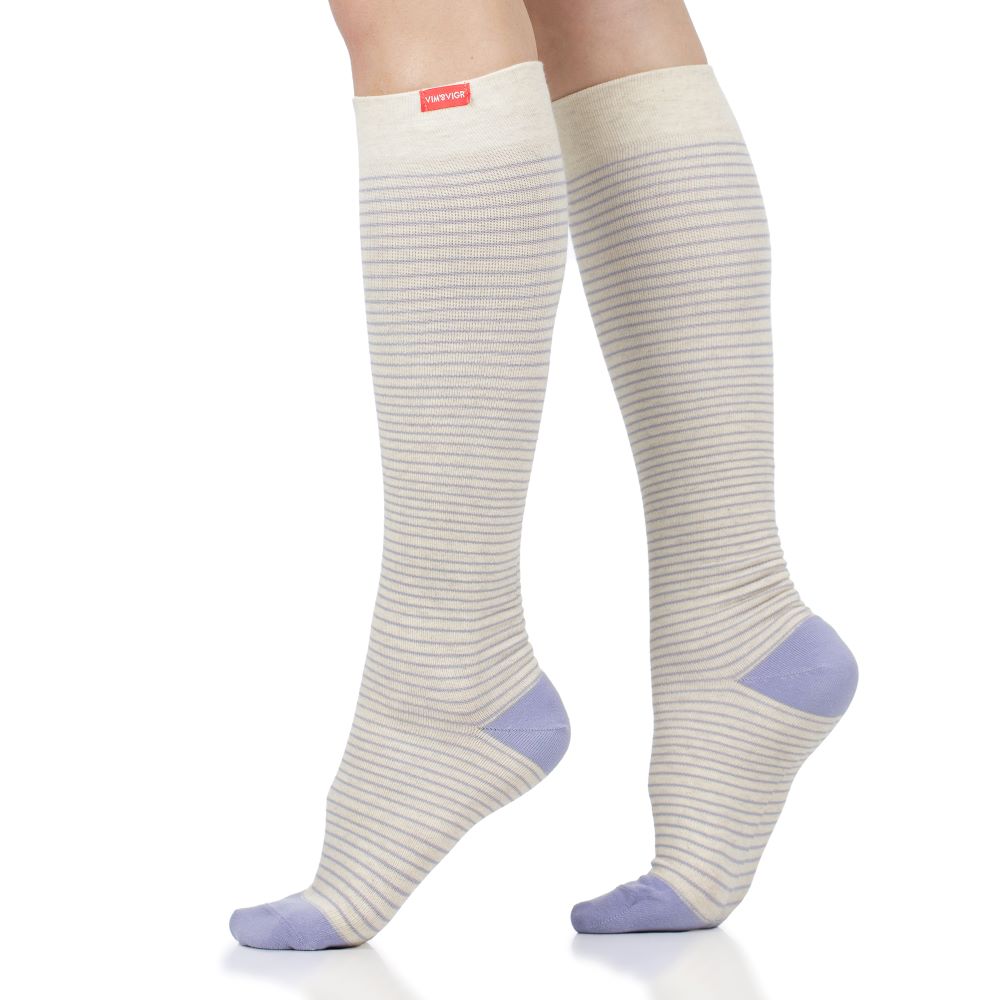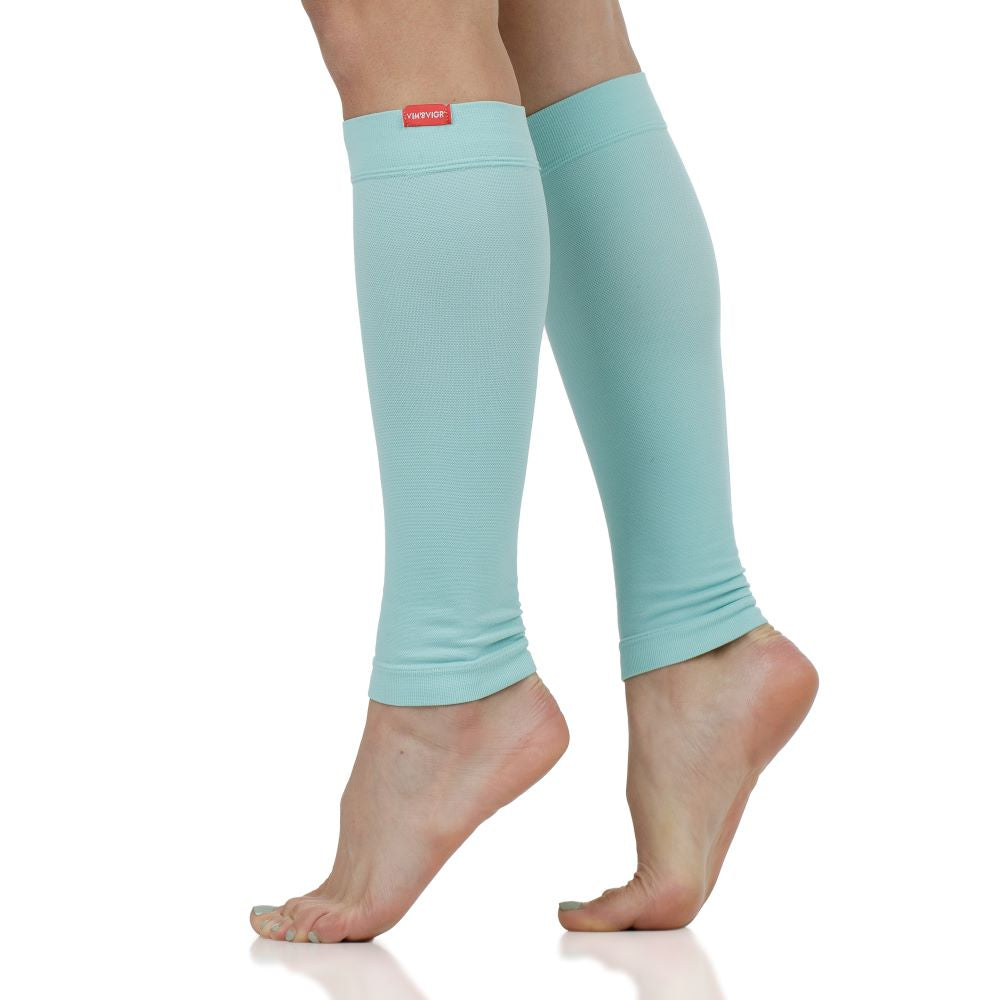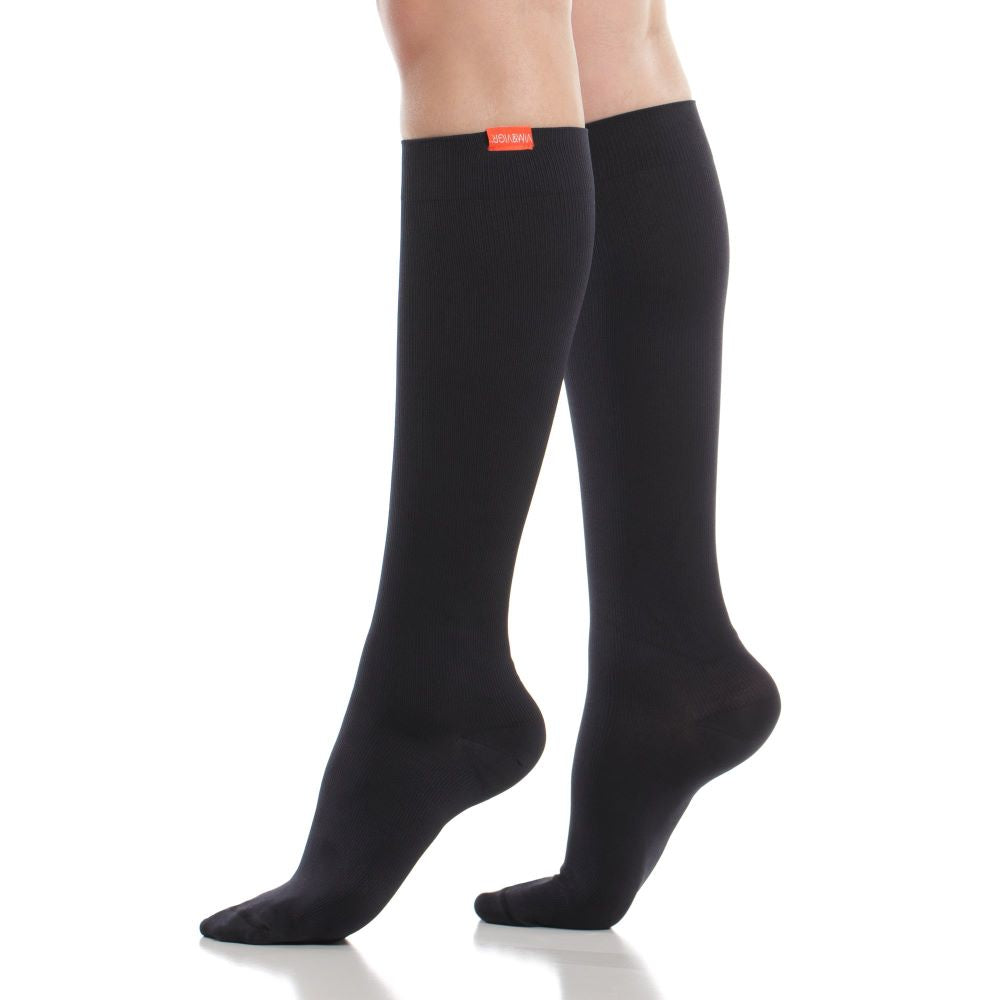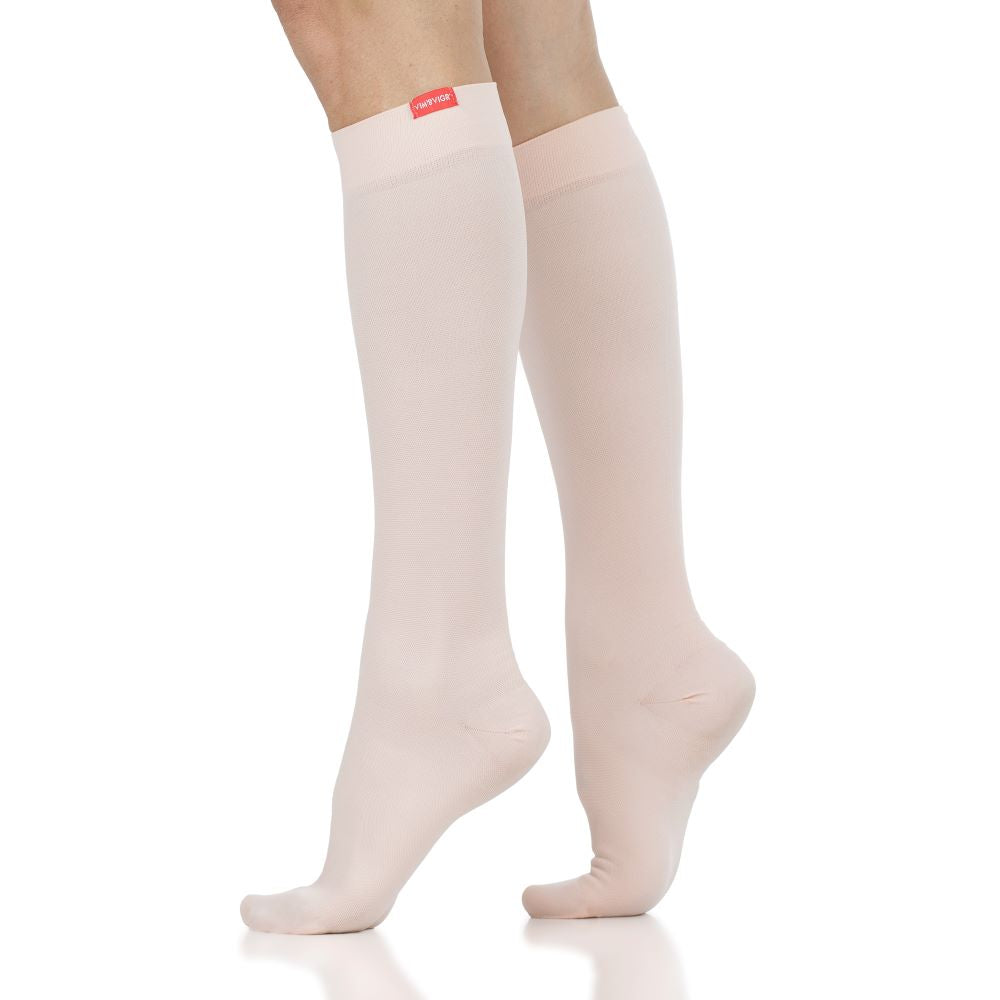Compression Socks for Restless Legs: How to Get Relief
Are there many conditions as frustrating as restless legs syndrome (RLS)? Whether you’ve been suffering with it your whole life or are experiencing it during pregnancy or following hormonal changes, RLS can be really uncomfortable and off-putting. But, the good news is that there are ways to deal with it - including something as simple as compression socks!
Restless legs syndrome affects people for various reasons and its causes are not clear-cut, it’s something that many of us experience as we get older or when we go through some life changes. It’s only normal, then, to want to understand it better and see how we can alleviate the symptoms of RLS.
Read on to find out more about this condition, how compression socks can help make you feel better, and other things you can do to relieve RLS discomfort.
What are Restless Legs?
The constant feeling of wanting to move your legs, usually after you’ve been sitting or lying down for an extended period, is commonly referred to as “restless legs.” The term restless leg syndrome (RLS) has been coined to describe when this feeling happens, usually in the evening or at night. You may also find it called Wilis-Ekbom disease.
RLS is not particularly linked to an illness, although it is more common in certain categories of patients. So don’t let the “syndrome” terminology worry you! We’ll review some of the common causes and risk factors below.

What Causes Restless Leg Syndrome?
There is often no known root cause of RLS, although it has been linked to low levels of dopamine (the neurotransmitter that’s responsible for creating feelings of pleasure and happiness in the brain, and a precursor of adrenaline). Dopamine also helps the brain control muscle movement, which is how it can be connected with restless leg syndrome.
Two major causes of RLS are heredity (it does run in the family, especially if you start experiencing it earlier in life) and pregnancy. The latter, or other significant hormonal changes, can worsen the symptoms of RLS temporarily. For some, pregnancy can be the first time you experience RLS, while for others, it may be a time when your symptoms get a little more severe.
We’ve also mentioned some more at-risk populations for developing RLS. These include women more so than men, and older people / the condition tends to develop later in life. RLS also may accompany other conditions, including:
- Peripheral neuropathy;
- Iron deficiency;
- Spinal cord conditions;
- Kidney issues / failure;
- Parkinson’s disease.
Finally, an often-overlooked cause of restless leg syndrome is Chronic Venous Insufficiency. Studies show that up to 22% of people suffering from RLS also have venous insufficiency, so improper blood circulation in the lower limbs can be a cause.
Common Symptoms of RLS
So, how does restless leg syndrome manifest itself? The first signs of RLS involve a general feeling of discomfort in the legs or feet. This might feel like itching or pins and needles, but some people just classify it as “compelling and unpleasant.”
In addition to this, here are some other descriptions of how RLS is perceived:
- Crawling or creeping feeling;
- Pulling;
- Throbbing;
- Aching;
- “Electric.”
It’s quite difficult to put it in words, but restless leg syndrome pretty much does what the name suggests. The overarching agreement is that people with RLS feel like they want to move their legs. The severity of this can fluctuate a lot, and it’s not associated with cramps or skin-level feelings. Instead, RLS seems to affect people “within the limb.”
How Do Compression Socks Help With Restless Legs?
The main impact of wearing compression socks is a reduction in fatigue and/or aches, coupled with a gently massaging action. When you suffer from restless leg syndrome, this will make a positive difference in the overall comfort of your lower limbs.
Thanks to graduated pressure which is stronger at ankle level and slowly decreases as you move up the leg, VIM VIGR compression socks help relieve swelling and discomfort, while making your legs feel lighter and more energized.
Additionally, when you wear compression socks during pregnancy or when sitting down for long periods of time (like during long drives or flights), or if you suffer from RLS as a result of Chronic Venous Insufficiency, the boost in lower leg blood flow is a huge benefit.

Choosing the Best Compression Socks for Restless Legs
Thanks to the simplicity of use and the positive side-effects of wearing compression socks for restless legs, they are some of the best treatments for this condition. But, if you’re still wondering how to make the most of compression socks in this situation, here are some tips on choosing your ideal pair and wearing them for best results.
Make sure you wear the correct size
Choosing your socks starts with sizing. In order to benefit from compression, you need to wear socks that are tight enough for the massage to take effect from your ankles up to your knees. You also need to ensure that your socks are not too tight (running the risk of cutting off your circulation).
To find your size, follow our guide here.
Understand compression levels
Compression socks come in several levels, according to how tightly they apply pressure to your limbs. To ensure you’re comfortable, we recommend starting with a moderate, 15-20 mmHg, level and then building up from there if you feel like applying more pressure.
You can find out more about compression levels here.
Choose the best fabric for your activity
Finding restless leg compression socks that suit your activity levels and environment (temperature, humidity) is also very important. Depending on if you’re running, walking, or just wearing your socks as a fun accessory at the office, you have a choice of moisture-wicking fabrics (like Merino wool), cotton, or more.
Wearing the most comfortable fabric for your desired activity will help your feet and legs feel more energized and fresher, too.
Consult with a medical professional
Wearing compression stockings or socks is recommended if you have certain health conditions, but you can also wear these garments casually as long as you pick a compression level that doesn’t require a prescription. However, if you have any concerns around blood flow, blood clots, skin issues, or more, you should consult with a doctor or medical professional before starting to wear compression socks.
How to Wear Restless Leg Compression Socks
Compression socks are easy and fun to wear, not requiring much more than choosing your ideal pressure level, fabric, and design. This is why they’re such a great treatment for restless leg syndrome and other lower limb issues like swelling and aching legs after long periods of sitting, edema, discomfort during pregnancy etc.
You can wear your compression socks as long as you are comfortable with them - whether this is for one hour, 8 hours, or a whole day. We recommend caring for and washing your socks regularly, so you won’t want to go for too long at a time, but it’s good to start small and increase your wear time gradually. The time it will take to feel a decrease in sensations associated with RLS can vary.
Precautions for Wearing Restless Legs Compression Socks
Compression socks are a very simple way to treat restless legs since they don’t require any special behavior or knowledge, and they can be worn at all times of day and in almost any context. You can style your socks with everyday outfits, wear them during sports activities, or as a recovery tool after exercise when you’re relaxing.
If you are concerned about any side effects, the key thing to look after with compression socks is that they fit correctly and that they are made from good-quality materials. Ill fitting socks can cause bruising or chafing. Low-quality fabrics can lead to irritations or redness on your skin.
Otherwise, wearing compression socks or stockings for restless legs doesn’t really come with any warnings.

Other Natural Ways to Relieve Restless Legs
Whether you struggle with RLS when you’re trying to get to sleep at night, during your pregnancy, or in any other context, the discomfort associated with it can really affect your rest and your mood. Wearing compression stockings to treat the symptoms is a great first step.
Additionally, you can also look to do the following when RLS strikes.
Exercise
Some gentle forms of exercise can help stimulate blood flow and get your legs moving with little pressure on your joints, which can be a good thing for RLS. For example, yoga and Pilates can be very beneficial (but not “extreme” yoga like hot yoga or extra difficult poses). Cycling and swimming are also very good options.
Stretching
To avoid RLS from settling in, you can do a few simple stretches regularly to mobilize your leg muscles. These include calf stretches (against a wall or chair, one leg at a time), stretching your quadriceps (front thigh), and hip flexor stretches from a lunge position (see study).
Heat Therapy
Alternating hot and cold compresses have been used to treat restless legs. This works towards reducing muscle strain and inflammation, helping to relax your leg muscles and hopefully reducing the symptoms of RLS.



















Leave a comment